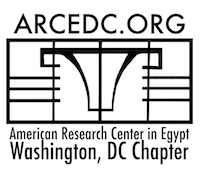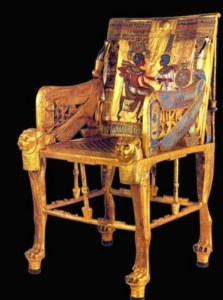
29
JunWashington D.C.: Power Tool: How Gold Enhanced Pharaoh’s Authority, Influence, and Prestige
Registration is Required
Presented by: Dr. Peter J. Brand
- 1:00 PM ETWashington, D.C.
- Zoom
- + Add to Calendar
Lecture Information
 In Ancient Egypt, gold was not just a financial instrument but a “power tool.” The pharaohs monopolized gold mining, and royal workshops crafted the gold into jewelry, sacred implements for temple ritual, and luxury objects.
In Ancient Egypt, gold was not just a financial instrument but a “power tool.” The pharaohs monopolized gold mining, and royal workshops crafted the gold into jewelry, sacred implements for temple ritual, and luxury objects.
Egyptian kings used golden objects to cement their power and enhance their prestige. They decorated themselves and their courts with gold and leveraged the precious metal to cement good relations with three key constituencies: the Egyptian elite, foreign kings, and the gods themselves.
Every high official longed to receive the “gold of praise,” a rich array of expensive trinkets and luxury goods pharaoh showered on his most favored courtiers.
During the New Kingdom (1550-1200 BCE), the pharaohs used gold in diplomacy in an exchange of luxury gifts and precious raw materials. Foreign kings pleaded with pharaoh to send them gold, which they claimed was as common as dust in Egypt.
To gain the favor of the gods, Egyptian kings consecrated huge quantities of gold and gilded items: ritual vessels, cultic implements, and sacred icons and idols. They even plated obelisks, sacred boats and barges, and the walls of temple sanctuaries with gold.
At the end of the New Kingdom, in the waning days of the Egyptian empire, the huge quantities of gold, silver, and electrum kept in temple treasuries and buried in the tombs of the Valley of the Kings and Valley of the Queens fell victim to widespread tomb robbery by the residents of ancient Thebes.
Speaker Bio
 Peter J. Brand (PhD University of Toronto) is an Egyptologist specializing in history, art, language, and epigraphy. His research examines the history and culture of New Kingdom Egypt (ca. 1550-1100 BCE), especially the Ramesside Period. He has authored three books and dozens of articles on Egyptian kingship, monumental construction, popular religion, warfare, and diplomacy.
Peter J. Brand (PhD University of Toronto) is an Egyptologist specializing in history, art, language, and epigraphy. His research examines the history and culture of New Kingdom Egypt (ca. 1550-1100 BCE), especially the Ramesside Period. He has authored three books and dozens of articles on Egyptian kingship, monumental construction, popular religion, warfare, and diplomacy.
Brand teaches in the History Department at The University of Memphis, in Tennessee, and is the director of the Karnak Great Hypostyle Hall Project, a joint endeavor of The University of Memphis and the Université de Québec à Montréal. The project is recording, conserving, and interpreting hundreds of scenes and hieroglyphic texts carved on the hall’s walls and forest of 134 giant columns.
Brand also appears in documentaries for the History Channel, Discovery, and National Geographic. His latest book, published last year, is a biography of the celebrated pharaoh Ramesses II, a.k.a. “Ramesses the Great” (ruled ca. 1279-1212 BCE).